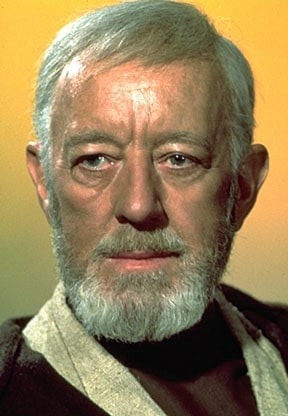Here’s a little story about the difference between transportation and “being transported” while at play. Cooking up the story requires three ingredients, Mario Kart (the video game), your memory of the first Star Wars film, and a bicycle.
 OK, let’s start with Mario Kart. One afternoon a few years ago a group of neighborhood 12-year-olds introduced me to the game. You pick a persona from a colorful cast of characters including the Mario brothers, saddle up a rocket-assisted all-terrain go-kart, and careen through a variety of fancy landscapes. You compete against other drivers who, in pursuit of the finish line, are empowered to run you off the course or blast you off it. I have to tell you two things—the game is hilarious (you’ll laugh right out loud), and it’s nowhere near as easy as it looks. In fact, these middle school whippersnappers were creaming me even though I’d earned my driver’s license during the Nixon administration.
OK, let’s start with Mario Kart. One afternoon a few years ago a group of neighborhood 12-year-olds introduced me to the game. You pick a persona from a colorful cast of characters including the Mario brothers, saddle up a rocket-assisted all-terrain go-kart, and careen through a variety of fancy landscapes. You compete against other drivers who, in pursuit of the finish line, are empowered to run you off the course or blast you off it. I have to tell you two things—the game is hilarious (you’ll laugh right out loud), and it’s nowhere near as easy as it looks. In fact, these middle school whippersnappers were creaming me even though I’d earned my driver’s license during the Nixon administration.
After amusing my smug sub-teen opponents by finishing dead last in several races, a very peculiar thing happened amid the staccato sound and flashing lights; it was a very peculiar thing indeed. Something basic in my vision shifted, some fundamental insight altered, and, I’m not kidding, my perception slowed. I won the next race and the next one after that. What was up?
 Here’s where Star Wars comes in. Remember the scene where Luke Skywalker is hoping to drop a proton torpedo down the intake tube of the moon-sized Death Star? Pursued by Darth Vader, the embodiment of evil, and a couple TIE-Fighters, he’s lost his wing man. Sure, he’s in a tight spot. But even worse, he’s become overwhelmed and overloaded by the input from his onboard telemetry.
Here’s where Star Wars comes in. Remember the scene where Luke Skywalker is hoping to drop a proton torpedo down the intake tube of the moon-sized Death Star? Pursued by Darth Vader, the embodiment of evil, and a couple TIE-Fighters, he’s lost his wing man. Sure, he’s in a tight spot. But even worse, he’s become overwhelmed and overloaded by the input from his onboard telemetry.  The best electronic system in the galaxy is flooding him with too much information and he’s getting creamed. Then, just in time, the deep, disembodied, rescuing voice of his old Jedi master comes to him; it’s Obi-Wan Kenobi, and he’s not on the headset. “Use the Force, Luke,” (except, because it’s Alec Guinness, it comes out “Lyuoooook…”) Obi-Wan says. “Let go…” At this, Luke moves his targeting computer aside, closes his eyes meditatively, and trusts to his own skill to guide the torpedo. Once Luke lets the Force be with him, the Death Star explodes in a most satisfying way.
The best electronic system in the galaxy is flooding him with too much information and he’s getting creamed. Then, just in time, the deep, disembodied, rescuing voice of his old Jedi master comes to him; it’s Obi-Wan Kenobi, and he’s not on the headset. “Use the Force, Luke,” (except, because it’s Alec Guinness, it comes out “Lyuoooook…”) Obi-Wan says. “Let go…” At this, Luke moves his targeting computer aside, closes his eyes meditatively, and trusts to his own skill to guide the torpedo. Once Luke lets the Force be with him, the Death Star explodes in a most satisfying way.
Now a distant voice is coming to me saying “Scott … what about the bicycle?” Ok, ok, here’s the thing about the bicycle. Recently, while riding on a rough road, the only smooth spot I could find was the painted white line at the verge. It took all my concentration to keep within this six-inch stripe as I corrected left, then right, then left again, minutely and continually balancing as a beginner might. But then, a peculiar thing happened—I discovered that it was much easier to follow the white line not by attending to the stripe itself as it passed underneath the wheel inch by inch, but by looking ahead. Looking too closely was turning the painted line into a tightrope and kept me from seeing it as a guideline and a path easily followed. I had to remember that I already know how to ride a bike, and when I did, my perception slowed as it had during the video game; the stripe seemed to widen, the miles passed by. In a similar way, driving Mario’s kart successfully had required seeing beyond the two-dimensional television screen image, or rather seeing directly into the cartoon racecourse and the play landscape. I had to recall that I already knew how to drive before I could stop over-steering and shoving the kart mechanically around the flat electronic space. I had to play along. In these cases and most cases, for playthings and for most things, if you want them to go you need to let go.



